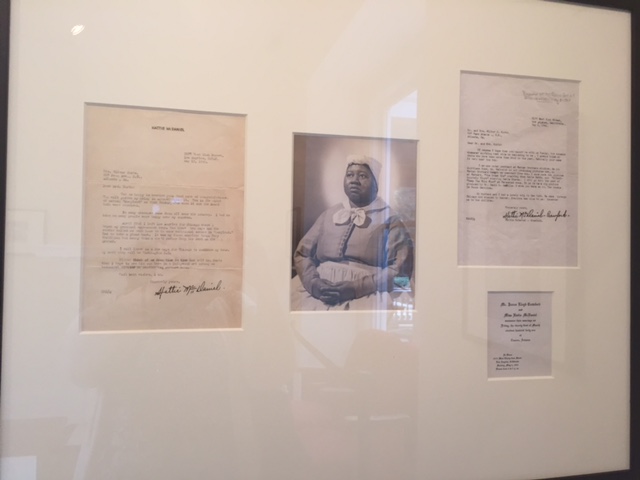Week 9: Digging for Evidence, the Atlanta History Center, and the Margaret Mitchell House
This week at GAIN, we received several new client referrals, and did a few intake interviews. Many of these new clients are potential VAWA applicants. One of the components of a VAWA application is providing evidence of the abuser’s immigration status. That is to say, the applicant needs to show that his/her abuser is a U.S. citizen or a legal permanent resident (green card holder). Unfortunately, this can sometimes be difficult to prove because many of our clients had to leave the home they shared with their abuser very quickly for their safety. They do not have time to make a photocopy of their abuser’s social security card, passport, or other piece of identification as they are fleeing, and after they leave, they cannot simply ask their abuser to give them a copy. This problem applies to other components of the VAWA application as well. For example, it can be difficult to prove the component of joint residence if the abuser didn’t put our client on the lease, and if the client had to flee without mail showing that he/she and the abuser lived at the same address. The downside of this is that applications without such evidence are usually not accepted by USCIS. That is to say, if GAIN is unable to provide solid primary documents that establish these components, sometimes USCIS requests more evidence, which causes an even greater delay in the application process. Therefore, as their legal representative, GAIN sometimes has to be creative to establish these components of their client’s applications.
One of our new clients was forced out of the home she shared with her abuser and their children with nearly no documentation. Therefore, this week, GAIN’s Immigrant Victims of Violence program attorney, Alpa Amin, and I did a lot of research to try to figure out how we can obtain documents and evidence for this client’s application. For example, the client’s husband has their children’s birth certificates, and is unlikely to give her copies. Therefore, we have to find another way to obtain each child’s birth certificate. This is further complicated by the fact that each of the three children was born in a different state, and each state has its own process and fee for obtaining a new copy of a birth certificate. We are also unsure if the abuser filed taxes in which he claimed our client or their children as dependents. Therefore, we researched how we could request a copy of his tax returns, and if this would even be possible if our client was not named on the return as a joint filer. We still are trying to figure this out, so if anyone has any suggestions, we would be very grateful!
Before and after working at GAIN each day, I have a 20-45 minute drive to and from Decatur where I am living this summer. Due to Atlanta’s heavy traffic, during rush hour, the commute usually takes me 45 minutes, and I am often stuck at traffic lights. This Friday, I was stuck behind a bus for most of my commute which had an advertisement for a temporary exhibit called “Filming the Camps,” sponsored by the French government and SNCF (France’s state-owned railway company, which runs most trains and the metro in Paris). I studied in Paris for year, so I was intrigued by the advertisement, and looked into it when I arrived home. I learned that the exhibit was at the Atlanta History Center, and is actually about three U.S. filmmakers who filmed the liberation of the concentration camps in Europe after WWII to document the atrocities that took place. So, this Saturday, I decided to pay a visit to the Atlanta History Center.
The Atlanta History Center is actually a collection of several diverse exhibits and spans several different buildings. One of the exhibits is dedicated to folk art in the South. Folk art includes various handicrafts like baskets, instruments, quilts, and even furniture. While these seem to be ordinary objects, with the rise of industrialization, handmade items like those displayed at the center are becoming much more rare.
Folk Art Exhibit
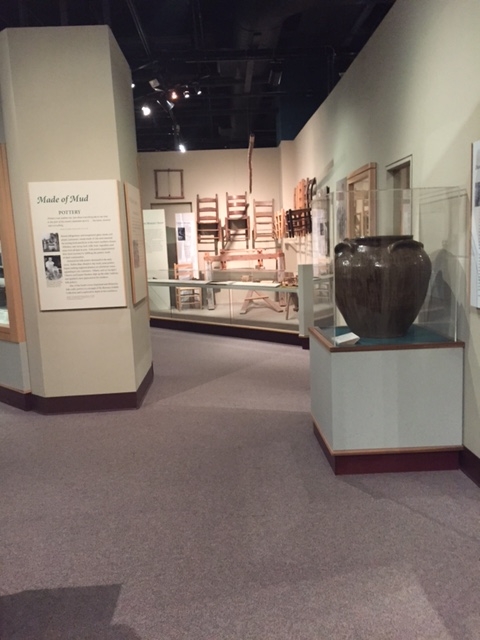
Another exhibit traces the history of the Civil War and Reconstruction, with a special focus on the role Atlanta and Atlanta citizens played. My favorite part of the exhibit discussed the flags used by the two armies (the Union and the Confederacy). After all the current events and controversy surrounding the use of the Confederate flag, I appreciated learning about its history. While I do believe in freedom of speech, personally, I think a museum display case is the best place for it!
Civil War Exhibit
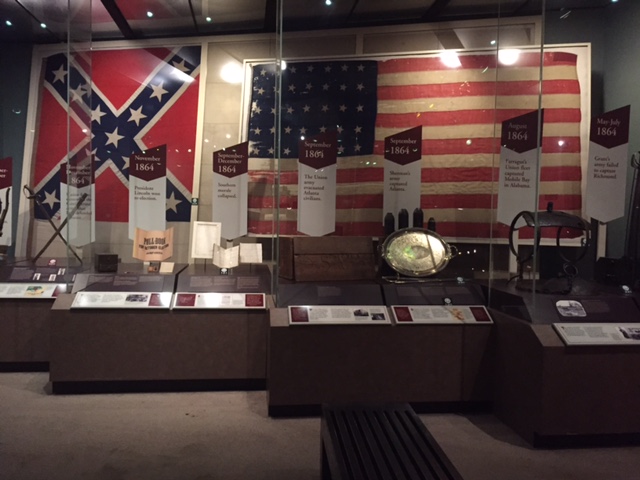
After seeing the civil war exhibit, I went to the temporary exhibit that originally piqued my interest in the Atlanta History Center: Filming the Camps. Learning about the history of the program to film the camps was fascinating, but footage itself was sobering. It was so difficult to watch, but I understand why it was necessary to capture on film. I think if they had not documented the camps in that way, people would have found it difficult, if not impossible, to believe people could actually inflict such atrocities on other human beings. I know that the footage was critical evidence in the Nuremburg tribunal, the first international tribunal dedicated to prosecuting international crimes, which resulted in the convictions of several high-level Nazi officials. Therefore, the law student in me (especially the part that enjoys international law) really appreciated the significance of this film evidence. If you are interested in learning more about the U.S. program to film the camps or the Nuremberg Tribunal, I highly recommend that you visit the Atlanta History Center this summer and that you check out the BBC documentary, Nuremburg: Nazis on Trial. Due to the graphic nature of the footage, and out of respect of the victims of the Holocaust, the picture below just shows the sign at the exhibit’s entrance.
Filming the Camps Exhibit
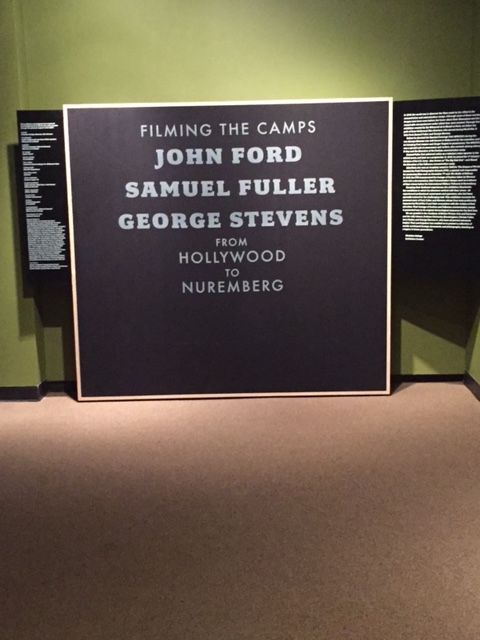
After the heavy material of the Filming the Camps Exhibit, I went to the more light-hearted Olympic Exhibit. In 1996, Atlanta hosted the Olympics, which was its Centennial year. The footage of the opening and closing ceremonies was breathtaking, and reading about the dramatic events was captivating.
The Olympic Exhibit
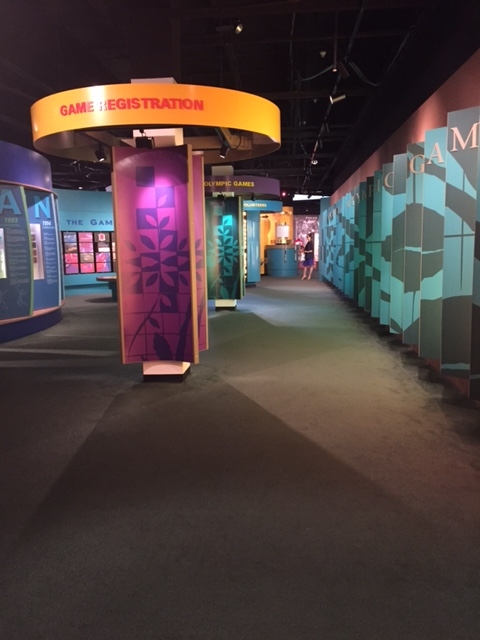
After I was done at the Olympic Exhibit, I had finished touring the main building of the museum, and so I made my way outside. The grounds of the museum are gorgeous, and there are several walking paths. One of the prettiest areas was the “Quarry Garden” which had a beautiful bridge overlooking the path.
The Quarry Bridge
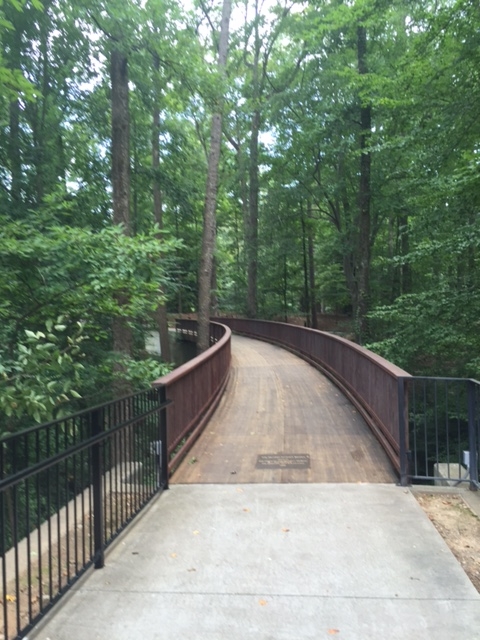
From the bridge, I went to the Smith Family Farm Exhibit. Originally located just outside of Atlanta, the farm’s buildings were moved to the museum grounds and preserved so they look just as they would have been in the 1860s. Actors in historical garb portray the Smith family members, their neighbors, and their enslaved workers, and explain the family’s history and the challenges of daily life during that period. The “farm” also has a number of real, live animals similar to those that would have been kept by the Smith family.
The Smith Farm Exhibit

After the Smith farm, I went forward in time about 75 years to visit the Swan House. Built in 1928, the Swan House was designed by Atlanta architect Philip Trammel Shutze for the Edward H. Inman family, heirs to a cotton brokerage fortune. Like the Smith farm, the house’s furnishings and actors in historic garb allow visitors to observe what life was like for the Inman family during the 1920s and 1930s. In addition to the beautiful interior furnishings, the house has lovely gardens, fountains, and views of the surrounding grounds.
Swan House
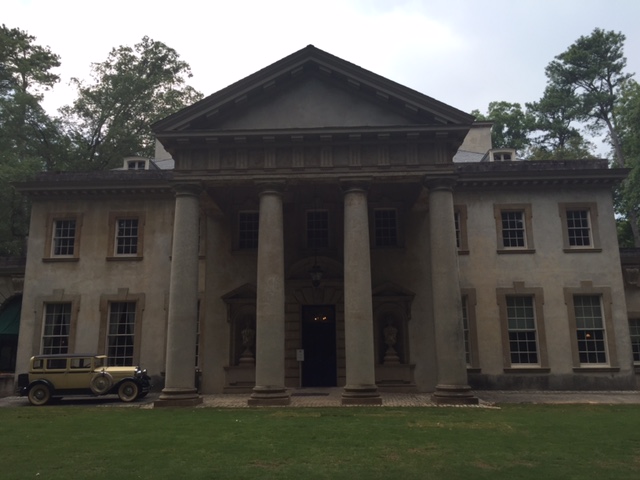
Swan House Garden

Swan House Fountain

A ticket to the Atlanta History Center also includes admission to the Margaret Mitchell house in Midtown, Atlanta, so later in the week, I went there after work. I knew very little about Margaret Mitchell’s life, besides the fact that she was the Atlanta author who wrote Gone with the Wind. From my tour, I learned she was a fiery, independent personality and very advanced for her time. Apparently, she wrote Gone with the Wind because she was confined to her home after breaking her ankle. Her husband tried to keep her entertained by bringing her books from the library, but she was such a fast reader that her husband claimed that besides the reference books, she made it through the library’s entire collection and he had nothing left to bring her. At that point, the story goes, he bought her a typewriter and told her it was time to write her own stories instead of reading those written by others. I must confess that I have not actually read Gone with the Wind, and that I hated the movie. My mom gave me the movie to watch one day when I was home sick with strep throat. I knew it was a classic, and was pleased that it was a lengthy film that would help me pass the time. However, I found Scarlett O’Hara to be a narcissistic, flighty, and bitter character and disliked how she spent so much time pining over Ashley. By the end of the film, I agreed with Rhett Butler, I didn’t really care what she did with her life. However, after learning more about Margaret Mitchell’s life, I am inclined to give the book a chance. After all, I tend to like books better than their film adaptations. Apparently, however, Margaret wholeheartedly approved of the film adaptation, besides the fact that Tara, Scarlett O’Hara’s plantation home, was much grander than what she described in the book. So the jury is still out… Below is a picture of the desk where Margaret wrote most of Gone with the Wind, and answered her fan mail. She liked that the two windows provided her with a lot of natural light and that the radiator on the ceiling kept her warm in the winter.
Margaret Mitchell’s Desk
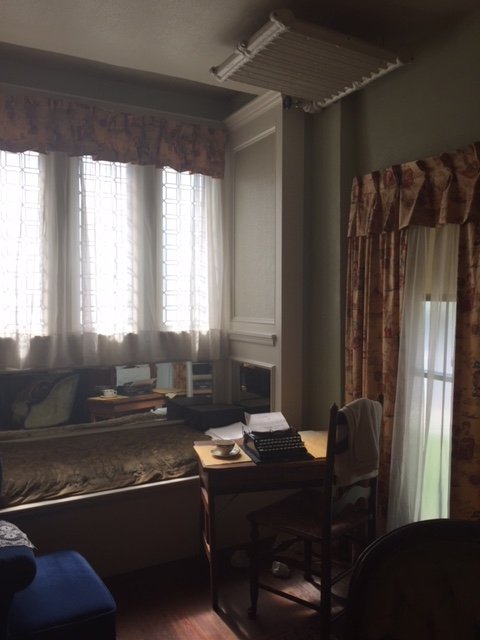
In addition to preserving Margaret Mitchell’s home, the building also has an exhibit on the premiere of Gone with the Wind, which actually took place here in Atlanta on December 15, 1939. While the film's director and most of the film’s stars were in attendance, sadly, the African-American actors in the film were prevented from attending due to the harsh Jim Crow segregation laws in place. Notably, Hattie McDaniel, who portrayed Mammy, Scarlett’s house servant, was unable to attend. Below is a picture of Ms. McDaniel and some letters she wrote to the film’s director, graciously thanking him for including her in the film and its showings in northern states, and remarking on how her involvement in the film had a positive impact on the African-American community. For me, Mammy was one of the few likeable characters in the film; she didn’t buy any of the nonsense Scarlett said and would call her out on her shenanigans. In sum, paying for a ticket to the Atlanta History Center is well worth the cost of admission, and it is not to be missed if one is visiting Atlanta.
Letters by Hattie McDaniel
